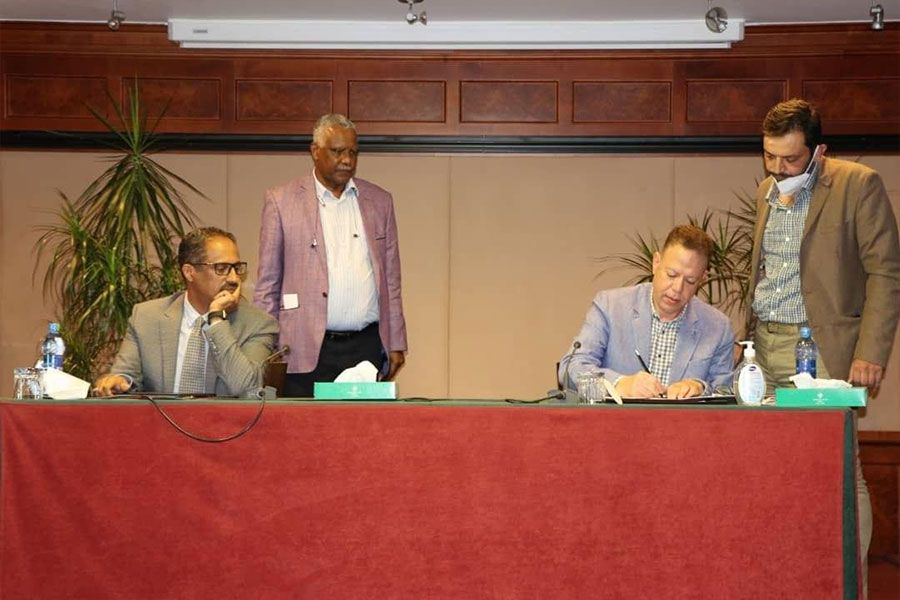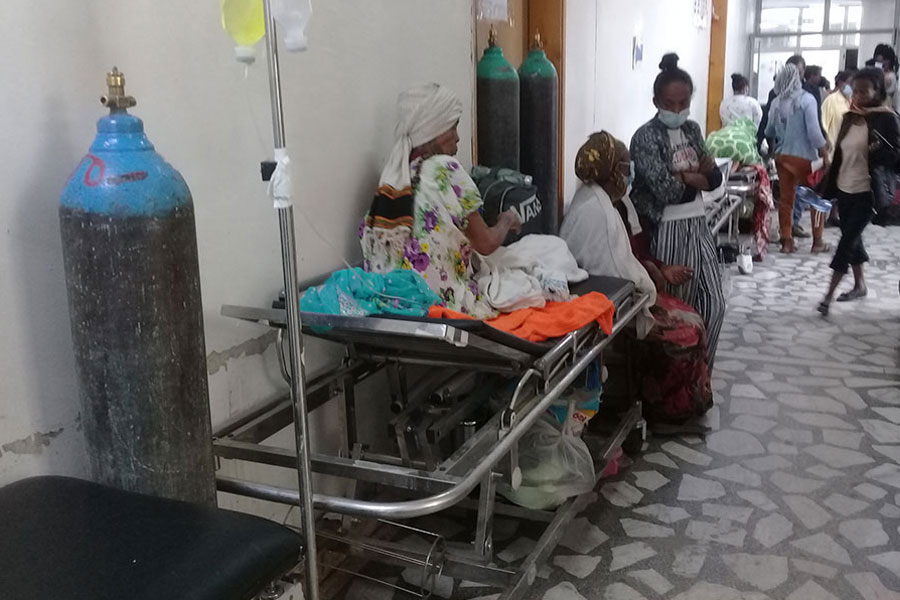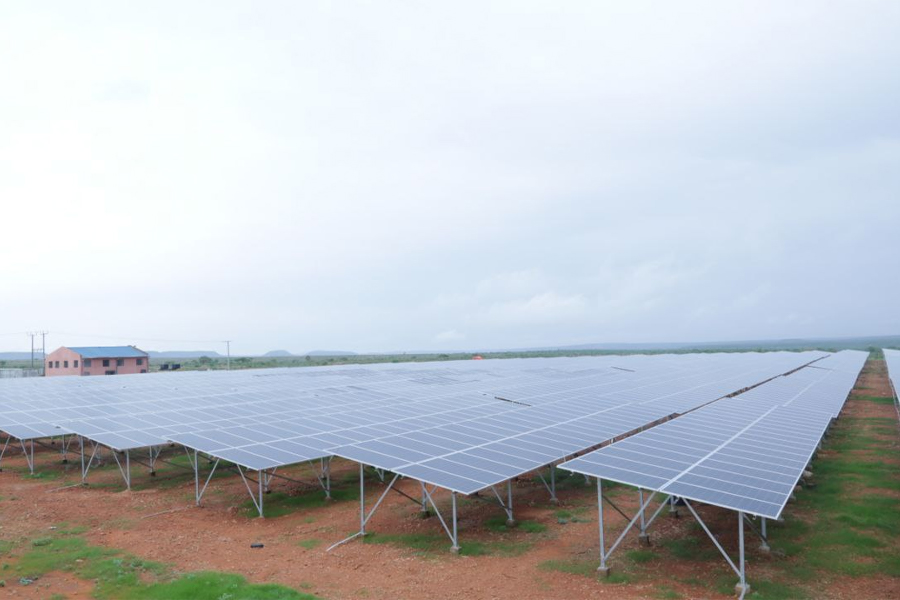
Fortune News | May 04,2024
Six small-scale irrigation schemes with a projected cost of 100 million Br will be launched in the Southern Regional State as drought continues to take a crippling toll in the south and east. Covering an aggregate area of 664ht, the dams are designed to benefit over 1,200 farmers and improve food security in the regional state.
Last year, the Southern Design & Construction Supervision Enterprise, a public consultancy company, carried out the design works for 1.3 million Br. The regional irrigation agency has been hired to supervise the projects while a bidding process to hire a contractor is underway.
The latest scheme comes on the heels of an initiative that saw 24 small-scale irrigation dams completed in the regional state over the past two years. The regional administration footed the 234 million Br bill for irrigation systems to improve agricultural productivity on 1,400ht. Officials say the scheme is crucial to improving food security and boosting income for poor rural households in drought-prone areas.
“Farmers who have access to irrigation are cultivating crops throughout the year,” said Kahsay Haile, director of small-scale irrigation projects in the regional state's Agriculture Bureau.
There are 2.8 million smallholder farmers in the region, farming one million hectares of land. The average holding size is 0.35ht, less than half the average in the neighbouring Oromia Regional State. Among the irrigation projects operational last year is one in Doyogena Wereda, Kembate Tembaro Zone, close to 300Km southwest of Addis Abeba. Financed by the Global Agriculture & Food Security Programme under the Agriculture Growth Project (AGP), the project has been a welcome change to around 1,600 farmers.
Demissie Gebeyaw, a father of four, used a traditional irrigation system to grow mainly vegetables and maize on one hectare over the past two decades. He says life was difficult where rain was unreliable. Expenses for renting a water pump and generator were challenging to handle.
“I once had to sell my ox to cover the costs," he said.
His luck changed after a small-scale irrigation canal in Wulbareg Wereda went operational last September. Demissie was quick to take advantage of the opportunity and sold 100,000 Br worth of chilli peppers a month ago.
Another farmer in Wulbareg Wereda is Nejeba Nuri, 35. She had realised that it was not productive to grow maize on a hectare of land sufficient to feed her five children without utilising irrigation. She was among the first batch of farmers who used the irrigation canal completed last year. Nejeba rented out an extra 1.5ht and planted vegetables; she harvested 32qtl of potato.
“I sold most of it for 1,600 Br a quintal,” she told Fortune.
Nejeba is preparing to grow another round of vegetables. Her plot is among the 38ht growing vegetables, according to Tigabu Tamirat, project coordinator of AGP.
“The region plans to expand this to 60ht," he said.
Close to 110 farmers are expected to benefit from the irrigation scheme.
The small landholding is a problem for agricultural productivity in the Southern Regional State, but unreliable rainfall is more urgent. Parts of the region, particularly in semi-arid areas bordering the Oromia Regional State, have been affected by prolonged drought. The Somali and Oromia regional states take the toll of drought, the worst in four decades. An estimated 13 million people in the Horn of Africa are at risk of hunger, according to the United Nations (UN).
Ethiopia faces food insecurity due to inadequate food production even when there is sufficient rainfall. The vast majority of farmers are dependent on rainfall, while less than one percent of the 3.5 million hectares of irrigable land has been cultivated.
Although farmers like Nejeba and Demissie have benefited from the irrigation scheme, the number of smallholder farmers that use irrigation is low. No more than 0.5pc of the farmland in the Southern Regional State is irrigated. Officials are doubling down, however. An additional 28 small-scale irrigation projects with a combined 2,000ht are under construction. These projects, estimated to cost 470 million Br, are expected to benefit 8,400 farmers.
Experts applaud the initiative.
Eyasu Mekonnen, who pursues a doctoral study in climate-smart agriculture and biodiversity conservation at Haramaya University, observed that small-scale irrigation's relative ease and low cost make it viable to respond to farmers affected by erratic rainfall and lack of farmland. However, the expert, who has conducted five research projects in irrigation water potential and crop productivity under irrigation, says many small-scale irrigation schemes have been abandoned due to soil erosion and sedimentation.
“The reservoirs that feed the small-scale irrigation schemes can easily fill with sediment," Eyasu said. "Most projects are doomed before serving less than half of their intended service time."
The sediment build-up is not a pressing issue for medium and large-scale irrigation schemes, which account for around two-thirds of irrigated land in the country. Two large-scale irrigation projects are underway in the Southern Regional State, according to Degenehi Dawit, director of large and medium irrigation projects of the Agriculture Bureau.
With a budget of 14.6 billion Br, the federal government launched the building of nine large-scale irrigation projects two years ago. They will have a combined capacity of developing 132,000ht of land.
Weybo Irrigation Project, which has a projected cost of 2.5 billion Br, is under construction in Wolayita Zone. The project is hoped to benefit 65,000 farmers and farm 4,000ht of land when it is completed in two years. The construction of the other large-scale project in Silt'e Zone, the Kalid Dijo Irrigation Project, started a year ago with a budget of 1.19 billion Br. Close to 1,800ht of land farmed by 2,200 people is the targeted beneficiary. Authorities plan to increase the land size developed by medium and large irrigation canals to 1.2 million hectares over the coming decade.
While the Ministry of Irrigation & Lowlands is responsible for developing and maintaining large and medium scale irrigation infrastructure, regional states are responsible for developing smaller projects. However, the construction of large and medium scale irrigation projects often faces delays and cost escalations. A shortage of cement is partly to blame for the delays.
Two weeks ago, the Ministry of Mines permitted contractors working on medium and large-scale irrigation projects to buy cement directly from cement plants.
PUBLISHED ON
Feb 12,2022 [ VOL
22 , NO
1137]

Fortune News | May 04,2024

Fortune News | Oct 17,2020

Agenda | Jan 29,2022

Fortune News | Oct 21,2023

Radar | Aug 31,2019

Radar | Nov 16,2024

Fortune News | May 23,2020

Radar | Jul 24,2021

Radar | Jul 08,2023

Radar | May 25,2024

Dec 22 , 2024 . By TIZITA SHEWAFERAW
Charged with transforming colossal state-owned enterprises into modern and competitiv...

Aug 18 , 2024 . By AKSAH ITALO
Although predictable Yonas Zerihun's job in the ride-hailing service is not immune to...

Jul 28 , 2024 . By TIZITA SHEWAFERAW
Unhabitual, perhaps too many, Samuel Gebreyohannes, 38, used to occasionally enjoy a couple of beers at breakfast. However, he recently swit...

Jul 13 , 2024 . By AKSAH ITALO
Investors who rely on tractors, trucks, and field vehicles for commuting, transporting commodities, and f...

Oct 25 , 2025
The regulatory machinery is on overdrive. In only two years, no fewer than 35 new pro...

Oct 18 , 2025
The political establishment, notably the ruling party and its top brass, has become p...

Oct 11 , 2025
Ladislas Farago, a roving Associated Press (AP) correspondent, arrived in Ethiopia in...

Oct 4 , 2025
Eyob Tekalegn (PhD) had been in the Governor's chair for only weeks when, on Septembe...